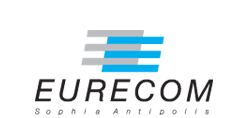Given the rise in the popularity of Knowledge Graphs (KGs) in various domains, there has been a growing demand for tools that can validate KGs and ensure data quality. Shapes constraint languages, such as SHACL and ShEx, have emerged to provide this functionality, and techniques have been developed to automatically extract validating shapes from KGs. However, to our knowledge, all existing shapes extraction techniques primarily target static KGs and are incapable of dealing with a more dynamic scenario where KGs evolve due to continuous updates. In such a context, it is necessary not just to use generated constraints to validate new updates (data repair) but also to continuously generate constraints themselves (constraint repair). In this work, we introduce the COntinuous Shapes Extraction (COSE) framework, which facilitates the continuous validation of KGs by dynamically generating and updating shape constraints in response to changes. COSE identifies updates between KGs versions, generates a delta graph based on these updates, extracts delta shapes from the graph, and integrates them with existing shapes to maintain data integrity. Using several versions of three real-world KGs, we perform a comparative evaluation to demonstrate that COSE can provide up to 10×–28× reduction in shapes extraction time compared to other state-of-the-art solutions while maintaining high accuracy. Finally, we identify several open problems that merit further attention related to the task of continuous KGs validation.
COSE: Continuous shapes extraction from dynamic knowledge graphs
BIGDATA 2025, IEEE International Conference on Big Data, 8-11 December 2025, Macau SAR, China
Type:
Conférence
City:
Macau
Date:
2025-12-08
Department:
Data Science
Eurecom Ref:
8506
Copyright:
© 2025 IEEE. Personal use of this material is permitted. However, permission to reprint/republish this material for advertising or promotional purposes or for creating new collective works for resale or redistribution to servers or lists, or to reuse any copyrighted component of this work in other works must be obtained from the IEEE.
See also:
PERMALINK : https://www.eurecom.fr/publication/8506



